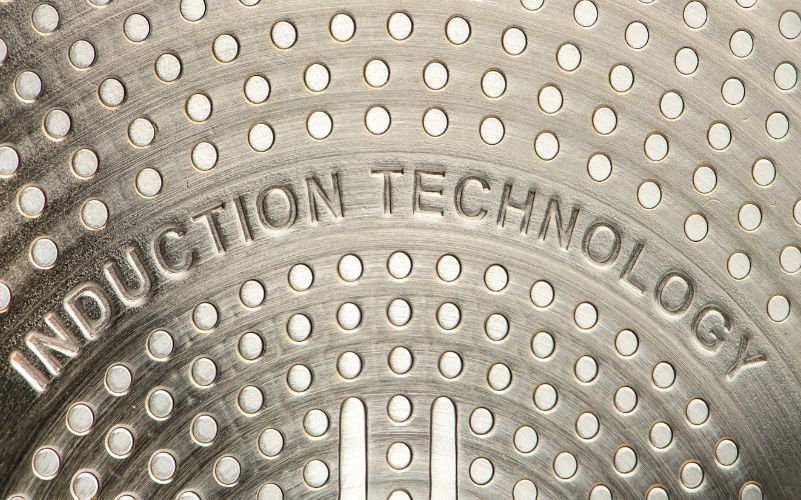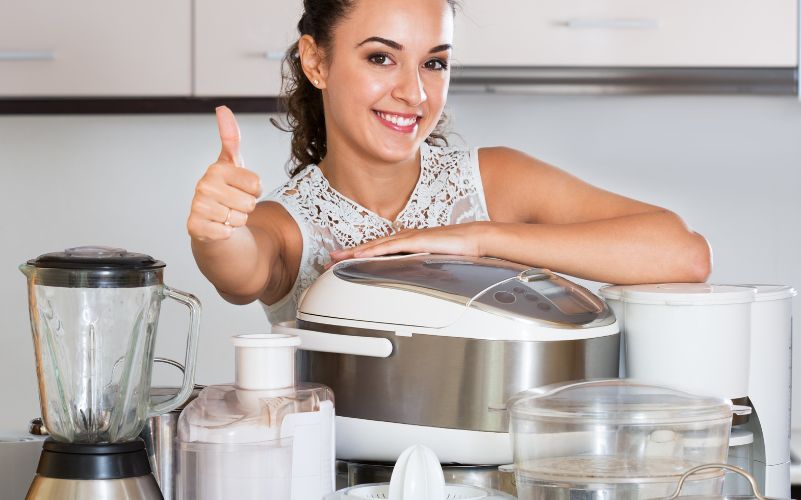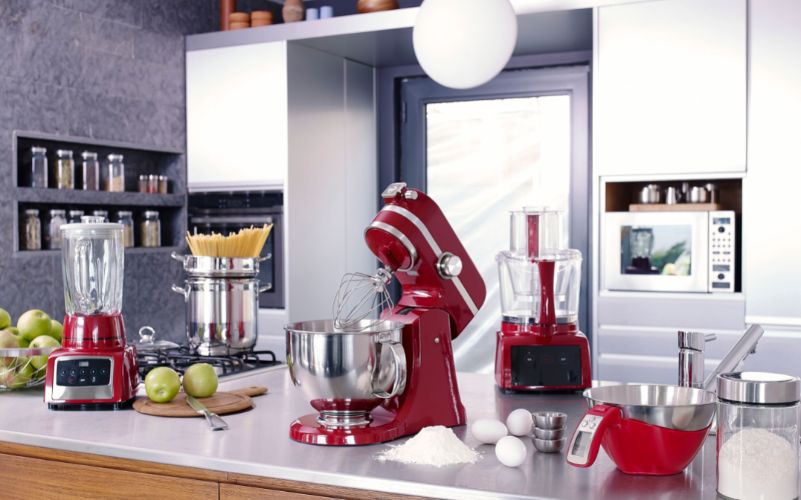- Basics of Induction Cooking
- Comparing Cooking Methods
- Setting Up Your Induction Cooktop
- Cooking Techniques
- Popular Induction Recipes
- Cleaning and Maintenance
- Induction Cooking Energy Efficiency and Sustainability
- Advanced Features and Technology
- Troubleshooting Common Issues
- Future of Induction Cooking
- Induction Cooking Closing Thoughts
- Frequently Asked Questions on Induction Cooking
Basics of Induction Cooking
How Induction Cooking Works
Induction cooking uses electromagnetic fields to heat pots and pans directly, bypassing the need for a traditional heat transfer method. This results in faster cooking times and precise temperature control, making it an efficient cooking method.
Key Benefits of Induction Cooking
One significant benefit of induction cooking is its energy efficiency, as it only heats the cookware and not the surrounding air. This leads to quicker cooking and lower energy bills. It provides safety features such as auto-shutoff when no cookware is detected on the surface.
Equipment Needed for Induction Cooking
To utilize induction cooking, you need a compatible cookware set that can generate heat through magnetic induction. Ensure your pots and pans have a ferrous metal base like cast iron or magnetic stainless steel for optimal performance.
Induction Cookware Types
- Cast iron
- Magnetic stainless steel
- Carbon steel
Special Utensils
When using induction cooktops, consider investing in special utensils designed for this purpose. Look for cookware with flat bottoms to ensure maximum contact with the heating element for efficient cooking results.
Comparing Cooking Methods
Induction vs Gas
Induction cooking is known for its efficiency and safety, unlike gas stoves that rely on open flames. Induction cooktops heat pots directly using electromagnetic energy, ensuring quicker cooking times.
Gas stoves, on the other hand, require a flame to heat the cookware, leading to heat loss and uneven cooking. Induction technology provides precise temperature control, reducing the risk of burnt food.
When it comes to cleaning, induction cooktops win with their smooth surfaces that are easy to wipe down. In contrast, gas stoves have grates and burners that require more thorough cleaning due to food spills and grease accumulation.
Induction vs Electric
Electric stoves are a popular choice in many households but fall short compared to induction cooktops in terms of speed and efficiency. Induction cooking offers rapid heating through direct energy transfer, whereas electric coils take longer to reach desired temperatures.
One significant advantage of induction over electric is its energy efficiency, as induction only heats the cookware itself rather than the entire cooking surface. This targeted heating results in less wasted energy and lower electricity bills.
In terms of safety, both induction and electric stoves are safer than gas stoves due to the absence of an open flame. However, induction cooktops cool down faster once the pot is removed, reducing the risk of accidental burns compared to traditional electric stoves.
Setting Up Your Induction Cooktop
Installation Tips
To ensure a smooth installation process for your induction cooktop, start by checking the manufacturer’s guidelines. Place the cooktop on a flat, stable surface to prevent any wobbling during cooking. Make sure there is proper ventilation around the cooktop to avoid overheating.
When installing the induction cooktop, ensure that you have the correct power supply. Most induction cooktops require a dedicated circuit with specific voltage and amperage requirements. It’s crucial to consult an electrician if you are unsure about the electrical connections.
Consider the size of your induction cookware when setting up the cooktop. Induction cooktops work efficiently with pots and pans that have a magnetic base. Test your existing cookware by using a magnet – if it sticks, it’s compatible! Investing in high-quality induction-compatible cookware can enhance your cooking experience.
Safety Guidelines
Prioritize safety when using an induction cooktop by keeping it clean and free from any spills or debris. Regularly wipe down the surface after each use to prevent any buildup that could affect its performance. Remember, a clean cooktop is not only more efficient but also safer.
When cooking with an induction cooktop, always use appropriate-sized cookware to ensure even heat distribution and prevent energy wastage. Avoid placing any objects on the cooktop when it’s not in use, as this can accidentally activate the heating elements and pose a safety risk.
Never leave your induction cooktop unattended while in use. The quick heating capabilities of induction technology mean that dishes can reach high temperatures rapidly. Always supervise your cooking and turn off the cooktop immediately after you finish preparing your meals.
Cooking Techniques
Temperature Control
Maintaining precise temperature control is a key advantage of induction cooking. The cookware directly heats up, allowing for instant adjustments. This feature ensures that your food cooks evenly and prevents burning.
Induction cooktops offer numerical temperature settings, providing accuracy in cooking various dishes. You can easily set the exact temperature needed for specific recipes, enhancing cooking efficiency.
The instantaneous response of induction cooktops to temperature changes makes them ideal for delicate dishes. This quick adjustment capability helps in achieving perfect results every time you cook.
Timing Tips
When using an induction cooktop, reduce your cooking time due to its rapid heating capabilities. This not only saves time but also conserves energy, making it an eco-friendly option.
To optimize your cooking experience, prepping ingredients beforehand is essential. Since induction cooktops heat up quickly, having ingredients ready allows for seamless and efficient cooking.
Utilize the timer function on your induction cooktop to ensure precise cooking times. This feature is beneficial for recipes that require specific timing, helping you achieve consistent results.
Popular Induction Recipes
Quick Meals
Induction cooking is perfect for whipping up quick meals when you’re short on time. Try making stir-fries, pasta dishes, or even a hearty soup. The speed and precision of induction cooktops ensure your meal is ready in no time.
For a simple and delicious stir-fry, heat your induction pan, add some oil, toss in your favorite vegetables and protein, and season with soy sauce and spices. In just minutes, you’ll have a flavorful meal ready to enjoy.
When craving something comforting yet fast, opt for a pasta dish. Boil water quickly using the boost function on your induction cooktop, cook the pasta to al dente perfection, then toss it with some pesto or marinara sauce for a satisfying meal.
Induction technology excels at simmering soups and stews to perfection. With precise temperature control, you can create a hearty soup by sautéing aromatics, adding broth and ingredients, then letting it simmer gently until all flavors meld together beautifully.
Gourmet Dishes
Elevate your culinary skills by preparing gourmet dishes using an induction cooktop. From delicate sauces to intricate desserts, the precise control offered by these cooktops enables you to achieve restaurant-quality results at home.
Impress your guests with a velvety béarnaise sauce made effortlessly on an induction cooktop. The consistent heat distribution ensures your emulsion comes together smoothly without any risk of scorching or curdling.
For a show-stopping main course, consider cooking a perfectly seared steak using the precise temperature settings of an induction cooktop. Sear each side to create a caramelized crust while keeping the inside tender and juicy—a gourmet experience right in your kitchen.
Indulge your sweet tooth by crafting delicate desserts like crème brûlée or molten chocolate lava cakes with the gentle heat control of an induction cooktop. The even heating prevents hot spots that could ruin these delicate treats.
Cleaning and Maintenance
Daily Care
To maintain your induction cooktop’s efficiency, wipe it down daily with a damp cloth. Avoid using abrasive cleaners.
Regularly clean spills immediately to prevent them from hardening and becoming more challenging to remove.
Deep Cleaning
For a deep clean, use a mixture of water and mild detergent to wipe down the surface. Ensure the cooktop is cool before cleaning.
Gently scrub any stubborn stains with a non-abrasive sponge or cloth to avoid scratching the glass surface.
Induction Cooking Energy Efficiency and Sustainability
Energy Saving Tips
- Optimize your cooking by using compatible cookware that heats up quickly on induction cooktops.
- Consider investing in cookware with flat bottoms for better heat transfer and efficiency.
- Avoid using oversized pans as they can lead to energy wastage due to heat loss around the sides.
- Remember to adjust the settings on your induction cooktop based on the dish you are preparing.
Environmental Impact
- Induction cooking is known for its environmentally friendly nature, emitting no harmful gases or fumes during operation.
- Compared to traditional gas or electric stoves, induction cooktops significantly reduce carbon emissions.
- The absence of open flames in induction cooking minimizes the risk of indoor air pollution and potential health hazards.
Advanced Features and Technology
Smart Functions
Induction cooking appliances come equipped with smart functions that enhance the cooking experience. These features include precise temperature control, allowing users to cook with accuracy. The cookware detection technology ensures that the induction cooker only operates when compatible pots or pans are placed on the surface.
Moreover, some models offer preset cooking programs for various dishes, simplifying the cooking process for users. The timer function enables individuals to set specific cooking times, promoting convenience and efficiency in the kitchen. automatic shut-off mechanisms enhance safety by turning off the appliance when not in use.
Safety Innovations
When it comes to safety innovations, induction cooktops excel in providing a secure cooking environment. The cool-to-touch surface prevents burns and accidents during and after cooking sessions. This feature is especially beneficial for households with children or pets.
Induction cookers also feature pan detection sensors, which automatically detect whether a pan is present on the cooktop. This not only ensures efficient energy usage but also reduces the risk of accidental burns or fires. Furthermore, the overheat protection functionality safeguards against overheating, offering peace of mind to users.
Troubleshooting Common Issues
Error Messages
Induction cooktops may display error messages to indicate issues. Common messages include “Pan Error” for incorrect pan types. Check user manual for specific solutions.
Another common error is “Overheat.” This indicates the cooktop is too hot. Allow it to cool down before using again. If the issue persists, contact customer support.
Performance Problems
If your induction cooktop isn’t heating properly, check for improper cookware placement. Ensure pots and pans are centered on the cooking zone for efficient heating.
Inconsistent heating can be due to uneven cookware bases. Use flat-bottomed cookware for better contact with the induction element, improving performance.
Cooktop not turning on? Ensure it’s plugged in and the power source is working. Check circuit breakers and fuses if necessary. Contact a technician if problems persist.
Uneven heat distribution can result from warped or dented cookware bottoms. Replace damaged cookware to ensure even cooking results across all zones.
Future of Induction Cooking
Market Trends for Induction Cooking
Induction cooking is witnessing a surge in popularity due to its energy efficiency and rapid heating capabilities. Consumers are increasingly opting for induction cooktops over traditional gas or electric stoves. This shift is driven by the growing awareness of environmental sustainability and the desire for faster cooking methods.
The market for induction cooking technology is projected to grow significantly in the coming years. By 2025, it is estimated that the global induction cooktop market will reach a value of $2.7 billion. This growth can be attributed to factors such as increasing urbanization, rising disposable incomes, and advancements in technology making induction cooktops more affordable.
One key trend in the market is the integration of smart features in induction cooktops. Manufacturers are incorporating WiFi connectivity and app-controlled functions, allowing users to remotely monitor and control their cooktops. This trend caters to the tech-savvy consumer demographic seeking convenience and efficiency in their kitchen appliances.
Induction Cooking Technological Advancements
Recent technological advancements have further enhanced the performance and functionality of induction cooktops. One notable development is the introduction of flexible cooking zones, which allow users to combine multiple smaller zones into a larger one to accommodate larger cookware or specialized cooking techniques.
Another significant advancement is the integration of sensor technology in induction cooktops. These sensors can detect the size and shape of cookware placed on the surface, automatically adjusting the heating elements to match, resulting in more precise and efficient cooking.
Moreover, advancements in induction coil design have led to improved heat distribution and temperature control, ensuring even cooking results across the entire surface of the cookware. This innovation has addressed common issues such as hot spots or uneven heating experienced with earlier models, enhancing user experience and satisfaction.
Induction Cooking Closing Thoughts
You’ve now grasped the ins and outs of induction cooking, from its efficiency to the diverse recipes you can try. With a setup guide, troubleshooting tips, and a peek into the future, you’re equipped to make the most of your induction cooktop. Embrace this modern cooking method to save energy, cook faster, and elevate your culinary skills.
Take your newfound knowledge and dive into the world of induction cooking with confidence. Experiment with different recipes, explore advanced features, and contribute to a more sustainable kitchen. Your journey into the realm of induction cooking starts now!




